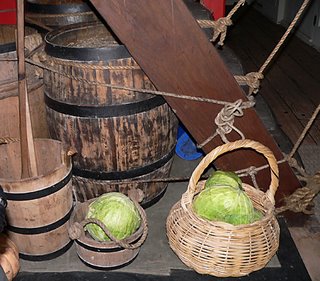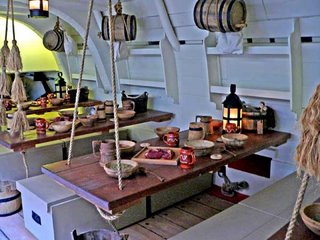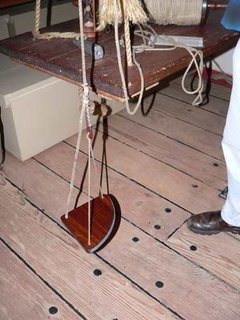

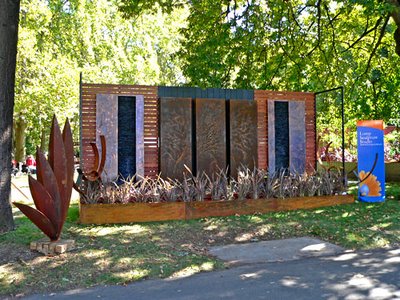


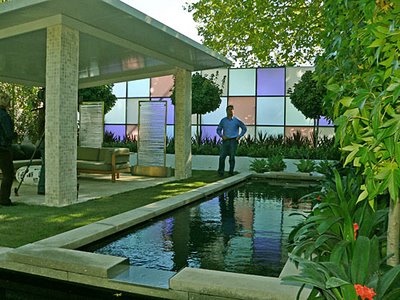
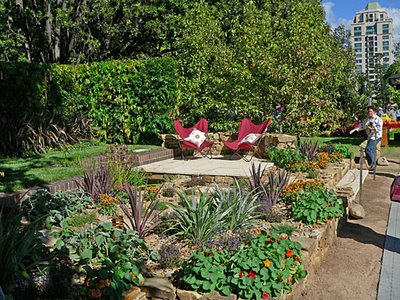










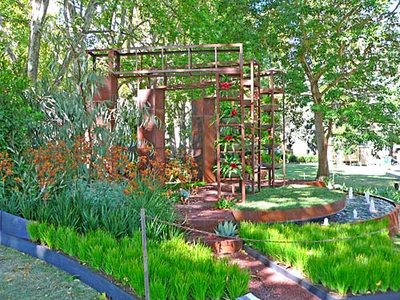


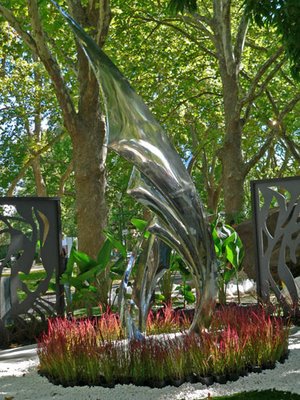

















































More photos from this succulent garden see slide show here

















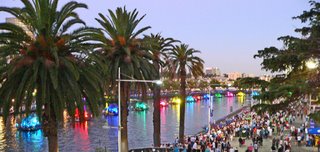

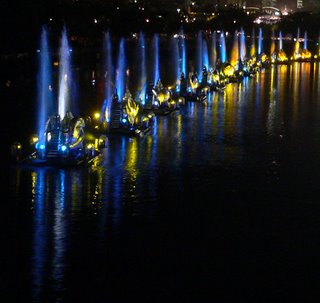


 NEWS 17 May - Wrecks of six British ships found off Rhode Island by researchers with the Rhode Island Marine Archaeology Project say there is a 47% one is the Endeavour.
This replica of Cook's ship was open to the public at Melbourne's Docklands today so I took the tour which I found very interesting and am glad I went - even if I have a bruised head. It is considered world wide to be the best replica ship ever made. The tools and materials were very carefully chosen to be as nearly authentic as possible. The construction was carried out in Western Australia at a cost of $14 million dollars even with much volunteer work.
It is 109 feet and 3 inches long and 29 feet 2 inches wide. The space between deck and the roof is very low indeed - the best being 4 foot six inches but sometimes so low that some people on this tour took to "walking" on their knees! There is a section below all the other decks which Cook used for food, fuel and water storage. This is now used for modern sailing and safety equipment below decks which makes everything above water level look exactly correct for the time when it was on the first voyage to Australia. It is called a Barque although the spelling on this particular one seems to be "bark" - perhaps this is from an era when spelling was allowed to be vague - "a sailing vessel of three or more masts and whose after mast [ back one] is fore-and-aft rigged". This sounds like double dutch to me.. will investigate... It is a square rigged ship and it would be great to see her under sail!
To see below deck required climbing backwards down a very steep set of steps through a small square hole in the deck, while holding tightly to a long knotted rope suspended from above.
NEWS 17 May - Wrecks of six British ships found off Rhode Island by researchers with the Rhode Island Marine Archaeology Project say there is a 47% one is the Endeavour.
This replica of Cook's ship was open to the public at Melbourne's Docklands today so I took the tour which I found very interesting and am glad I went - even if I have a bruised head. It is considered world wide to be the best replica ship ever made. The tools and materials were very carefully chosen to be as nearly authentic as possible. The construction was carried out in Western Australia at a cost of $14 million dollars even with much volunteer work.
It is 109 feet and 3 inches long and 29 feet 2 inches wide. The space between deck and the roof is very low indeed - the best being 4 foot six inches but sometimes so low that some people on this tour took to "walking" on their knees! There is a section below all the other decks which Cook used for food, fuel and water storage. This is now used for modern sailing and safety equipment below decks which makes everything above water level look exactly correct for the time when it was on the first voyage to Australia. It is called a Barque although the spelling on this particular one seems to be "bark" - perhaps this is from an era when spelling was allowed to be vague - "a sailing vessel of three or more masts and whose after mast [ back one] is fore-and-aft rigged". This sounds like double dutch to me.. will investigate... It is a square rigged ship and it would be great to see her under sail!
To see below deck required climbing backwards down a very steep set of steps through a small square hole in the deck, while holding tightly to a long knotted rope suspended from above.



 The Ship's Cat a VIP - in the Mess Deck. really a stuffed cat
The Ship's Cat a VIP - in the Mess Deck. really a stuffed cat
The first place we were shown below the main deck was the galley - or ships kitchen. This was a narrow floor space in front of a huge iron stove/oven that burned wood. It had huge pots of stew and gruel for the men and a spit for roasting meat for the officers and the ill. There were many measures around this furnace designed to prevent fire on board. We were shown the appalling looking barrels of salted pork, another with sauerkraut to prevent scurvy, another with potatoes. Alongside all this were some fresh vegetables that the sailors would get eveytime they would dock.
Aft or towards the back of the ship from this stove - galley area was the eating / sleeping / relaxing area for most of the crew of 94 people on Cook's voyage.
The seats at these table were the trunks for the clothes and possessions of the crew. And cats were good to keep down the rats which always plaque ships and wharfs. The tables were suspended from the roof so they could remain level but as the men were sitting on the trunks to eat, the table and plate of food would move with the swells...
No person on board died of scurvy after a 3 year journey which was amazing for this era. In 1747 a the Scottish naval surgeon Dr James Lind showed that having daily oranges and lemons scurvy could be prevented. His was not believed but Captain Cook realised it was important so insisted on all his crew eating them daily. Amazingly it took another 50 years for the British Admiralty to prescribe a daily ration of lemon juice for all sailors in the Navy. However a total of 30 of Cook's passengers and crew of all ranks died - mostly from dysentery contracted in ports of Batavia [Indonesia] and South Africa. There were no showers - or washing facilities for the crew. The Captain had a wash bowl and a mirror and officers all had a chamber pot under their bed. The front of the ship or head of ship had a board to sit on out over the edge of the ship with big hole in it for a toilet. Hence saiors refer to the t lavatory as the "head" . In the days of cook it was called the "seat if ease". The officers quarters were all at the rear of the ship- far away from this area. Their meals were even prepared up there too but cooked in the main galley.
The type of hat a man wore indicated his rank - see the three hats on a rack in photo.
In the Mess Deck the men slept in hammocks that had to be folded very small and stowed just under the rafters above the dining tables during the day. To test if the hammock was folded tightly enough it had to pass through this rope loop.
